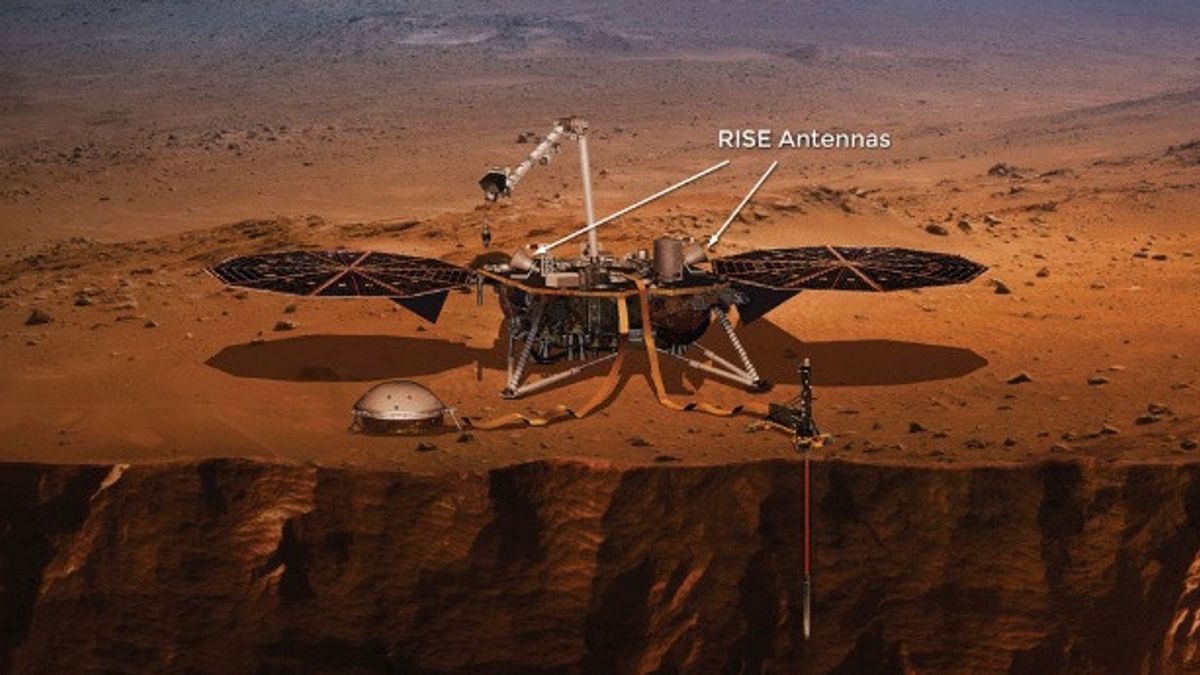JAKARTA - NASA's InSight lander gets quite surprising information from Planet Mars, where the length of the planet is getting shorter by just four milliseconds each year as rotation rotates.
Standard day on Mars or sol is 24 hours and 37 minutes, but the latest data in the accuracy of a fraction of the milliseconds has revealed the planet's rotation rate is increasing very small.
To track the planet's rotation rate, scientists rely on one of InSight's instruments, radio brokers, and antennas collectively called the Interior Rotation and Structure Experiment (RISE).
They found the planet's rotation accelerated by about four milliseconds per year, in accordance with the marsian length of the day with a fraction of milliseconds per year.
Scientists aren't entirely sure why this is happening, likely related to Mars' mass redistribution, which could have an impact on planetary rotations such as ice skaters pulling their arms to spin faster.
This is due to the accumulation of ice on the Martian polar cap by its own surface which slowly recovers from the weight of the large glacier at equatorial latitude during the world's latest ice age.
"This is a historic experiment. We have spent a lot of time and energy preparing the experiment and anticipating this discovery," said lead author of the paper and major investigator of ISE, Sebastien Le Maistre, quoted by Space and NASA, Friday, August 11.
"But despite this, we are still surprised along the way and this is not over yet, because RISE still has a lot to reveal about Mars," he added.
In the InSight case, scientists will send radio signals to landers using Deep Space Network (DSN). ISE will then reflect the signal again.
When scientists receive a reflected signal, they will look for small changes in frequency caused by Doppler shifts (the same effect that causes ambulance sirens to change the tone as they approach and move away). By measuring the shift, they can determine how fast the planet rotates.
What we are looking for is a variation that is only a few tens of centimeters during a year of Mars. It takes a very long time and a lot of data to collect even before we can see this variation," said Maistre.
The paper checks data from the first 900 days of Mars InSight, enough time to search for such variations.
Scientists are doing their job to eliminate noise sources. Water slows down radio signals, so humidity in Earth's atmosphere can damage signals coming back from Mars. Likewise, solar winds, electrons and protons are thrown away into space from the Sun.
In addition, RISE data is also used by scientists to measure Mars' wobbles, which are called nutations due to spills in its liquid core.
Mars seesaw data can be used by scientists to determine the core size. Based on ISE data, the core has a radius of approximately 1,835 kilometers.
Then, they compared the figure to the previous two core measurements obtained from the spacecraft seismometer.
اقرأ أيضا:
In particular, they see how seismic waves walk through the interior of the planet, whether they reflect the core or pass it without a hitch.
Taking into account these three measurements, they estimate the core radius to be between 1,790 and 1,850 kilometers.
The overall Mars has a radius of 3,390 kilometers, about half the size of the Earth. Measuring the Martian wobble also provides details about its core shape.
RISE data shows the core shape cannot be explained simply by its rotation. That form requires areas with slightly higher or lower density buried deep in the mantle," said the author of the two papers, Attilio Rivoldini.
Going forward, scientists will mine InSight data for the coming years. The new findings have been published in a paper in Nature.
The English, Chinese, Japanese, Arabic, and French versions are automatically generated by the AI. So there may still be inaccuracies in translating, please always see Indonesian as our main language. (system supported by DigitalSiber.id)

















